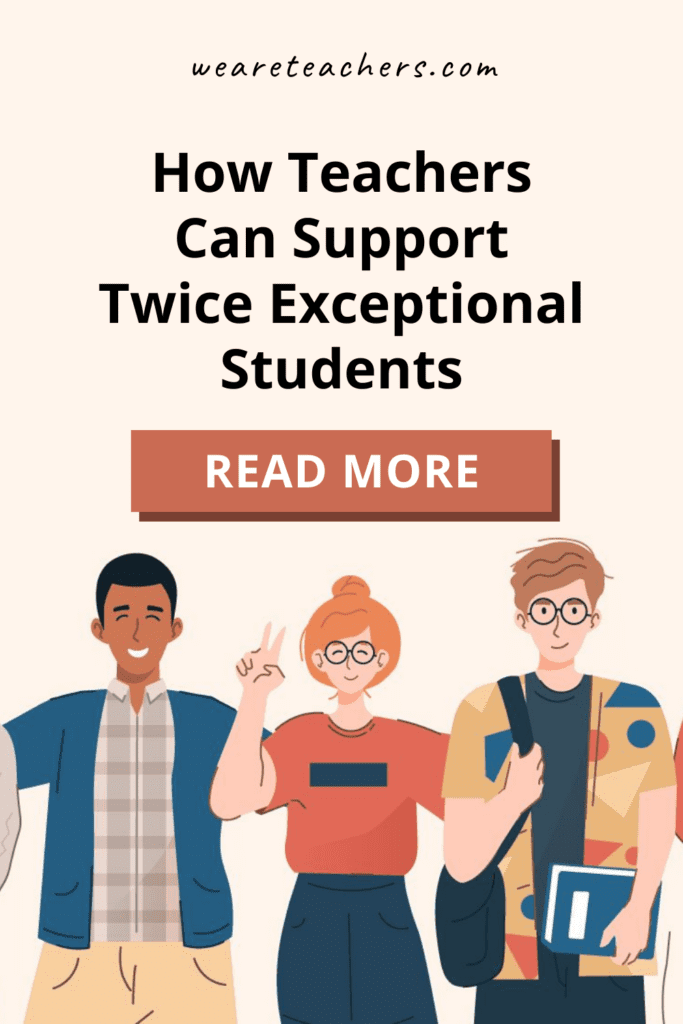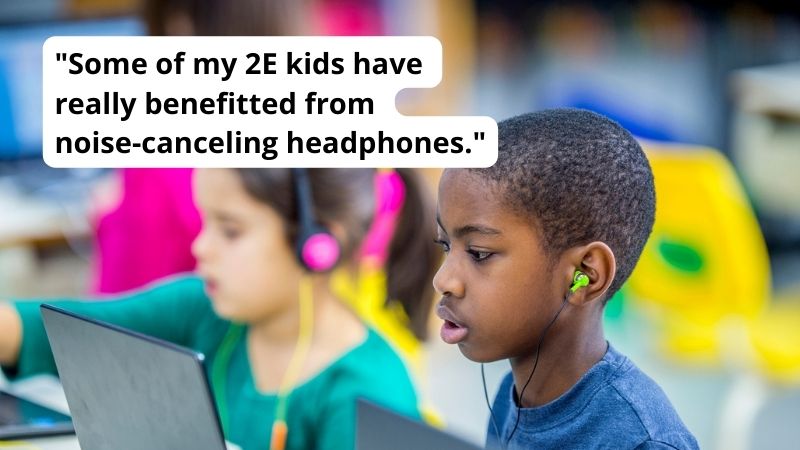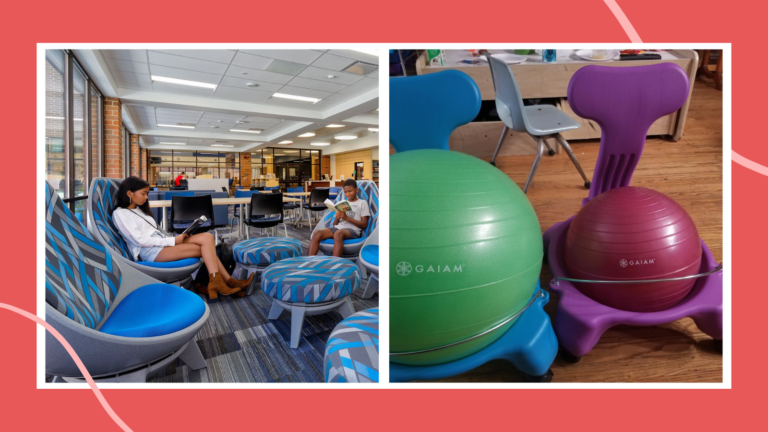Twice exceptional students, or 2e students, are learners who are identified as exceptionally bright but who also have disabilities (for example ADHD, mild autism, dyslexia, or other learning or behavioral challenges) that need specialized attention. According to a report on twice exceptionality by National Association for Gifted Children, there are approximately three million gifted children in grades K-12 in the United States, approximately six percent of the total student population.
Characteristics of twice exceptional learners:
According to the Davidson Institute, a nonprofit serving profoundly gifted young people 18 and under, common characteristics of twice exceptional students include:
- Outstanding critical thinking and problem-solving skills.
- Above average sensitivity, causing them to react more intensely to sounds, tastes, smells, etc.
- Strong sense of curiosity.
- Low self-esteem due to perfectionism.
- Poor social skills.
- Strong ability to concentrate deeply (in areas of interest).
- Difficulties with reading and writing due to cognitive processing deficits.
- Behavioral problems due to underlying stress, boredom, and lack of motivation.
The dichotomy of 2e students’ abilities makes it challenging for the average classroom teacher to provide an effective and appropriate education. But twice exceptional children deserve an education that fits, just like all students. With that in mind, here are eight ways teachers can support twice exceptional students.
[contextly_auto_sidebar]
1. Focus on the student’s strengths
Following a strength-based model of education is the best course of action for supporting twice exceptional students. Recognize their giftedness first, not their disability. In other words, put more emphasis on developing their unique talents than remediating their deficiencies. Engage your twice exceptional students in challenging curricula tailored to their strengths. Give them opportunities for high-level abstract thinking, creativity, and problem solving.
2. Address social-emotional needs
Twice exceptional students need a nurturing environment that supports the development of their own unique potential. A safe, supportive, problem-solving culture that values individual differences and learning styles is best. Strategies include instruction shaped around students’ interests and strengths, activities designed with multiple intelligences in mind, flexible grouping, and an emphasis on individual growth. “Help your student expand their emotional vocabulary to better express their needs,” suggests teacher/administrator Michael Postma,” and seek out healthy friendships, keeping in mind that sometimes, intellectual friends are more important than chronological friends.”
3. Be aware of the classroom environment
Twice-exceptional students are often highly sensitive to their surroundings. Fluorescent lighting, uncomfortable furniture, noisy HVAC systems, and not enough space can make learning difficult. Consider using lamps instead of overhead lighting, offer alternative seating options, and make space available so students can regroup when they’re feeling overwhelmed. Figure out the best seating option for classroom work and offer an alternative, quiet spot for test-taking.
4. Teach executive functioning skills
A lack of executive functioning skills can have a negative impact on both the emotional well-being and academic performance of twice exceptional students. It’s important to give 2e students explicit instruction on organizational, time management, and study skills. Set up methods of communication that will help them stay on track, such as frequent reminders of objectives and time frames, as well as visual cues and private signals that will help them stay on track.
5. Individualize instruction
All students benefit from individualized instruction, but it is essential for students with discrepant abilities. The National Association for Gifted Children has called for children who are 2e to receive “a dually differentiated program,” one that nurtures their gifts and talents while accommodating for learning weaknesses. Classroom teachers, gifted educators, and special educators need to work together to implement effective strategies. In addition, opportunities for one-on-one tutoring should be encouraged.
6. Give 2e students some control
Connecticut teacher Caroline Galeota recommends giving 2e students some control over their own work environment. “Some of my students have benefitted from having music playing and using noise-canceling headphones while working on tasks during the school day,” she says. “These accommodations help students succeed and remain engaged. Opportunities for creativity and choice can also support 2e students—teachers can give the class the option to pursue their interests and explore independent study projects.”
7. Integrate technology
Assistive technology is highly recommended for twice exceptional students who may be struggling with dysgraphia, poor handwriting, and/or underdeveloped fine motor skills. Tools such as keyboards, word processing and dictation software, e-calendars, and graphic organizers are beneficial accommodations.
8. Provide counseling support
Many gifted children have an innate drive to achieve perfection. This can generate a great deal of psychological conflict in academically talented children who have difficulty achieving. In addition, many 2e students struggle with self-esteem because of their disparate abilities. Group counseling can help these students see that other kids are having experiences similar to their own. And individual counseling can help them deal with their own unique struggles.
What strategies have you found helpful in supporting twice exceptional students? Share in the comments below.
Plus, check out 50 Tips, Tricks and Ideas for Teaching Gifted Students.


